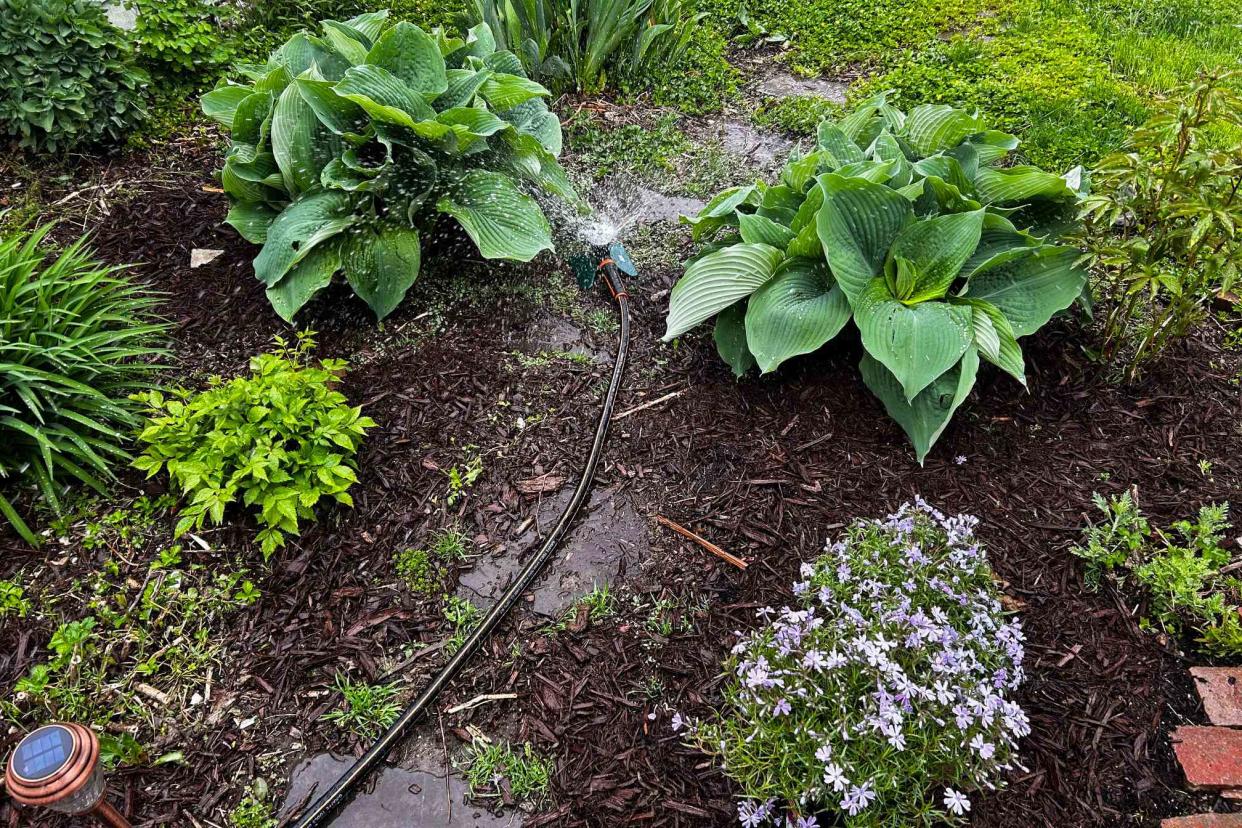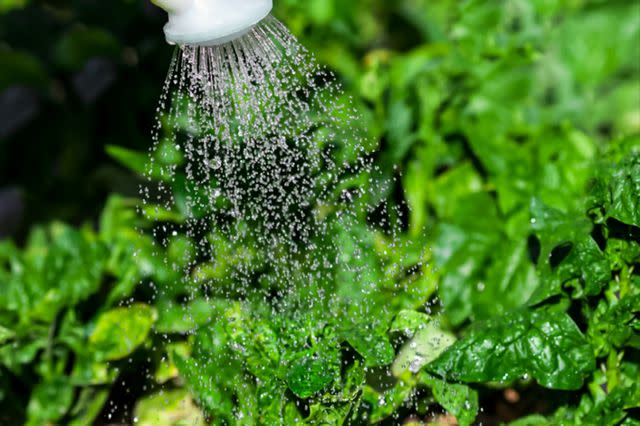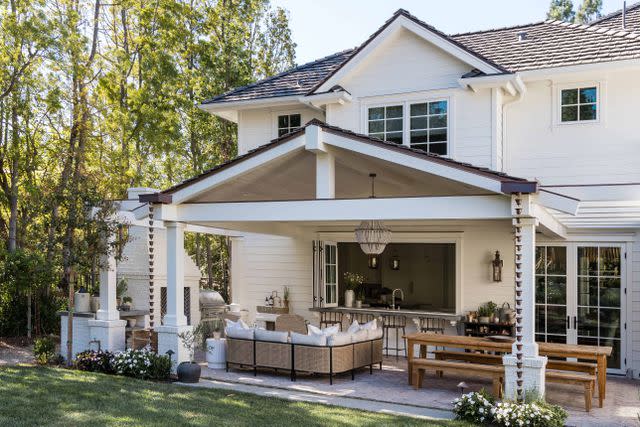6 Watering Mistakes You're Definitely Making in Your Summer Garden, According to Pros

The Spruce / Jenica Currie
Planting and maintaining a thriving garden isn’t all knowledge and natural instincts—there can be an element of luck, too. Your plants’ success can be out of control with influences like rain, wind, and other weather. But fortunately, one elements can be managed to a certain extent: water.
Figuring out when and how to best water your garden can make or break your growing season. We turned to a few of our favorite planting experts for advice on the most common watering mistakes people make in their gardens.
The good thing? They’re all either easily avoidable or easily fixable.
Mistake #1: Using (and Wasting) Too Much Water

The Spruce / K. Dave
According to Mike Lizotte of American Meadows, one of the most common watering mistakes is actually too much water. This often comes down to misreading the planting instructions.
Every plant is different and requires different amounts of water. Unfortunately, this also means a ton of water is wasted watering plants that don’t need it.
Signs of Overwatering
Signs of overwatering are squishy or soft stems, yellow leaves, soil that’s wet to the touch, brown edges or spots on leaves, or slow growth.
The Fix: Look for Signs of Overwatering and Adjust
Kristina Bentz of High Country Gardens says you’ll know you’re overwatering if your plants look stressed.
“When being overwatered, the leaves on the plant will start to turn yellow instead of the green they usually are," Bentz says.
If you’re manually watering your plants, you can cut back. If you’re using drip irrigation, Bentz says you can lessen your frequency of watering and give the soil a chance to dry out in between. Drought-tolerant plants prefer their soil to be on the drier side, after all.
Want more gardening tips? Sign up for our free gardening newsletter for our best-growing tips, troubleshooting hacks, and more!
Mistake #2: Watering When It’s Too Hot
Megan Foster, American Meadows' perennial and bulb expert, says another common problem is watering during the hottest time of the day. It’s much better to water when it’s cooler, as less water is lost to evaporation and you risk inadvertently underwatering your plants.
Clues that your plants are underwatered include dry, cracked soil, and wilting, droopy, or folded leaves.
“More of the water you use will have a chance to seep down to the roots where the plants will access it to keep them happy during those driest hours,” Foster says.
The Fix: Water Early in the Morning or Evening
Frost adds that watering more deeply is another way to combat underwatering.
“Remember, watering deeply to soak your soil is better than frequent shallow watering,” she says. “Mulching can also help prevent soil moisture loss.”
Mistake #3: Watering Too Frequently

The Spruce / Alandra Chavarria
Hadley Mueller of High Country Gardens says that a major problem she notices is people often water too frequently—and as a result, they don’t water deeply enough.
The Fix: Allow Water to Penetrate Before Adding More
Mueller suggests letting the water really seep in before watering again. “This encourages the deepening of roots which, over time, allows the plant to be more water retentive," she says.
If you don’t do this, then Mueller explains that you risk changing your soil in a way that blocks oxygen from passing through the pores. “This makes for a gluey, sticky, wet soil that can drown plants' roots,” Mueller says.
Katie Tamony, the CMO and trendspotter at Monrovia, agrees. She suggests aiming directly for the roots for a long soaking every couple of days.
“This will make sure the water gets down to the lowest roots, and encourages the plant roots to grow deeper, making it more drought tolerant in the future,” she says.”
Mistake #4: Planting in the Wrong Season
If you’re planting things now, you could be causing your own watering problems without even knowing it, says Tamony. Fall is actually the best time to plant trees and shrubs, since this ensures that plants have proper time to establish their root system before their spring growth, which gives them better preparation for summer.
The Fix: Planning Your Garden Seasonally
Bentz agrees, and while there’s nothing you can do for your plants right now, you can start planning ahead.
“Fall tends to have cooler weather and be less windy, resulting in the soil not drying out as quickly,” Bentz says. “Perennials also start to move into dormancy in the fall.”
This means these plants can focus on their root growth instead of their top growth which, as Bentz tells us, requires less watering.
Mistake #5: Not Monitoring Soil Moisture and Health

Figuring out if you’re over or underwatering your plants doesn’t have to be a guessing game. Tamony suggests keeping an eye on your soil moisture by periodically checking at the roots to ensure proper moisture levels.
“This is especially important during extreme weather changes,” Tamony says, who also points out that soil moisture can sometimes alert you to a problem before the plant will. “Many conifers don’t show signs of drought stress until months later, so it is important to monitor the soil, especially if they were recently planted.”
The Fix: Check for Dry Soil With a Poke
You don’t need any expensive gadgets—or anything at all, according to Tamony. The best way you check is simply putting your finger in the soil and checking if it's dry.
Mistake #6: Not Mapping Out Your Garden Correctly
Mapping out your garden is a great thing to do for aesthetics, but a few of our experts noted it’s also key for creating a successful watering plan. If you skip this step or ignore grouping plants together based on their watering needs, you risk a messy mix of underwatered and overwatered plants.
The Fix: Place Plants Where They'll Be Happiest
Tamony tells us that it’s once again all about reading the instructions and planting your plants based on their individual needs.
“Make sure plants that need good drainage aren’t planted in spots that tend to get water-logged,” she says. “Plants that need more water will be happier in soil with some clay and organic matter to help retain moisture.”
A Great Overall Solution

All of our experts agree that if you want to properly water your plants while also prioritizing water efficiency, a drip irrigation system is the way to go.
“It provides deep watering right to the roots and is completely customizable, allowing you to use different emitters to meet each plant’s needs,” Tamony says.
If you’re reading this and envisioning a dug-up lawn, don’t panic. Tamony assures us that installing drip irrigation isn’t as intense as it sounds.
“Systems can be built off of hose bibs, so a major in-ground installation is not necessary, making it an affordable DIY project,” she says. “It is probably the best investment you can make in your garden.”
Foster agrees, pointing out that this system actually saves water. “Drip irrigation gently seeps water directly to the soil over the plant roots without risking loss via evaporation or imprecise spray from traditional sprinklers or hoses,” she says.
Read Next: The 11 Best Self-Watering Planters of 2024
Read the original article on The Spruce.

